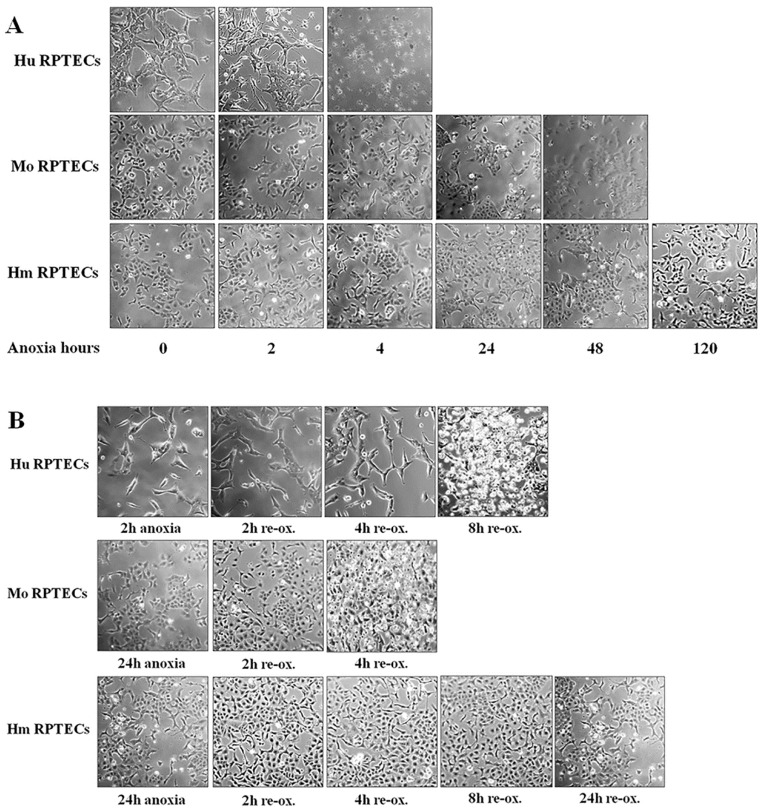Figure 1.
Sensitivity of human, mouse, and hamster renal proximal tubular epithelial cells (RPTECs) to death due to anoxia or reoxygenation. Human RPTECs were extremely sensitive to anoxia since they died after 4 h of anoxia. Mouse RPTECs were less sensitive than human RPTECs, since they died after 48 h of anoxia. On the contrary, hamster RPTECs were extremely resistant to anoxic conditions, since they remained alive even after 120 h of observation (A). During reoxygenation, human RPTECs deteriorated significantly, showing condensation and loss of adherence on a very large scale, after 8 h. Mouse RPTECs were even more sensitive to reoxygenation, since they deteriorated considerably after 4 h. On the contrary, hamster RPTECs were extremely resistant to reoxygenation, since they preserved their morphology after 48 h of observation (B). The photos are representative of one of the nine performed experiments. Hu: human; Mo: mouse; Hm: hamster.

